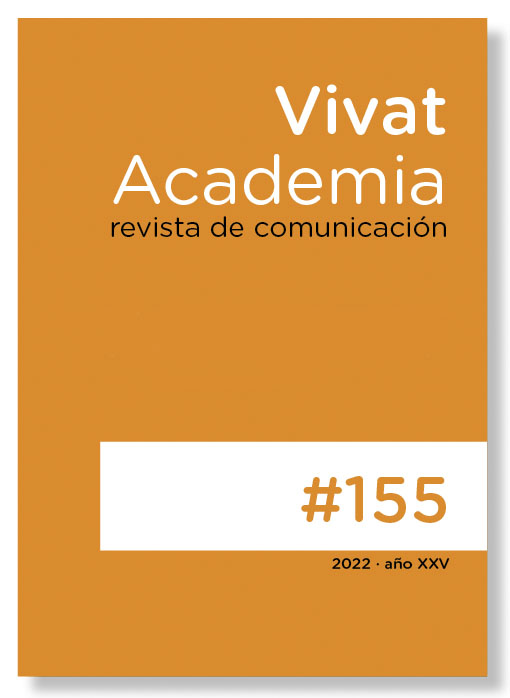The dual hero in late capitalism. Myth’ new languages in V for Vendetta and Mr. Robot
Main Article Content
Abstract
This research analyzes the presence and characteristics of the so-called dual or ambivalent hero in two critical dystopias that open and close late capitalism: the comic V for Vendetta (1982-1990) and the Mr. Robot series (2015-2019). The dual hero is already present in archaic myths. However, it was blurred to give way to more defined archetypes. The narratives of late capitalism, in which critical dystopia and science fiction have proliferated, recover this duplicitous hero. Using a complete bibliographic review that allows us to connect the theories of different scholars specialized in myth study and through the detailed analysis of these two critical dystopias influenced by science fiction, we verify how myths adapt to the dysfunctions and complications of current life. Through a critique of the social and economic incongruities of neoliberalism and the digital society, the duplicitous heroes of V for Vendetta and Mr. Robot point to a liberating sense concerning the current context. Both texts offer a kind of revenge or compensation and reflect the confusion in values in late capitalism.
Downloads
Article Details

This work is licensed under a Creative Commons Attribution-NonCommercial-ShareAlike 4.0 International License.
The main author must deliver the letter of transfer of copyright, according to the model provided by Vivat Academia, Revista de comunicación, which declares the transfer of copyright to the journal and make explicit the rights of authors regarding the dissemination and use of the manuscript once published.
Creative Commons Attribution/Non Commercial 4.0 International
References
Aladro, E. (2013). Sobre el concepto de proyección en el mundo comunicativo. Revista Historia y Comunicación Social, 18, 317-329.
Aladro, E., Jivkova, D. y Bailey, O. (2018). Artivismo: un nuevo lenguaje educativo para la acción social. Comunicar, 57, (XXVI), 9-18. https://doi.org/10.3916/C57-2018-01
Bauman, Z. (2001). La posmodernidad y sus descontentos. Madrid: Akal.
Baudrillard, J. (2007). La sociedad de consumo. Sus mitos, sus estructuras. Madrid: Siglo XXI.
Bowcott, O. (2015). Thatcher tried to block 'bad taste' public health warnings about Aids. The Guardian, 30-12-2015. https://www.theguardian.com/politics/2015/dec/30/thatcher-tried-to-block-bad-taste-public-health-warnings-about-aids
Campbell, J. (1959). El héroe de las mil caras. México: FCE.
Campbell, J. (2016). El poder del mito. Madrid: Capitán Swing.
Eliade (1999). Imágenes y símbolos. Madrid: Taurus.
Eliade (2005). La isla de Eutanasius. Madrid: Trotta.
Fernández Pichel, S. N. (2013). “Amado monstruo. Lo heroico y lo monstruoso en Walter White”, en Cobo, S. y Hernández, V. (coord.) Breaking Bad. 530 gramos (de papel) para serieadictos no rehabilitados. Madrid: Errata Naturae, 105-122.
Fitting, Peter (2010). Utopia, dystopia and science fiction. En Claeys, G. (ed.)The Cambridge Companion to Utopian Literature. Cambridge: Cambridge University Press, 135- 153.
Gimbutas, Marija (2014). Dioses y diosas de la vieja Europa. Madrid: Trotta.
Gimbutas, Marija (2019). El lenguaje de la diosa. Barcelona: Atalanta.
Hermida, C. (20000). Crisis y restructuración del capitalismo: 1973-2000. Historia y Comunicación Social, 5, 255-270.
Hernández Santaolalla, Víctor y Hermida, Alberto (2016). Más allá de la distopía tecnológica: videovigilancia y activismo en Black Mirror y Mr. Robot. Index Comunicación, 6(2), 53-65.
Eliade, Mircea (1999). Imágenes y símbolos. Madrid: Taurus.
Eliade, Mircea (2005). La isla de Eutanasius. Madrid: Trotta.
Fitting, P. (2010). Utopia, dystopia and science fiction. En Claeys, G. (Ed.) The Cambridge Companion to Utopian Literature, Cambridge: Cambridge University Press, 135- 153.
Gimbutas, M. (2014). Dioses y diosas de la vieja Europa. Madrid: Trotta.
Gimbutas, M. (2019). El lenguaje de la diosa. Barcelona: Atalanta.
Hernández-Santaolalla, V. y Hermida, A. (2016) Más allá de la distopía tecnológica: videovigilancia y activismo en Black Mirror y Mr. Robot. Index. comunicación,. 6(2), 53-65.
Jameson, F. (1991). El posmodernismo como lógica cultural del capitalismo tardío. Buenos Aires: Imago Mundi.
Jung, C. (2002). Mysterium Coniunctionis. Madrid: Trotta.
Jung, C. (2008). La vida simbólica. Madrid: Trotta.
Jung, C. (2011). Aión. Contribuciones a los simbolismos del sí mismo. Madrid: Trotta.
Hermida, C. (2000). Crisis y restructuración del capitalismo: 1973-2000. Historia y Comunicación Social, 5, 255-270.
López Keller, Estrella (1991). Distopía: otro final de la utopía. REIS (Revista Española de Investigaciones Sociológicas), 55, 7-23.
Lyotard, J. F. (1992). ¿Qué es lo posmoderno? Zona Erógena, 12, 1-10.
Moore, A. y Lloyd, David (2015). V de Vendetta. ECC Ediciones: Barcelona.
Morin, E. (2001). El cine o el hombre imaginario. Barcelona: Paidós.
Miller, T. & McHoul, A. (1998). Popular Culture and Everyday Life. Londres: Sage.
Moylan, T. (2018). Scraps Of The Untainted Sky: Science Fiction, Utopia, Dystopia. Nueva York: Routledge.
Novell Monroy, N. (2008). Literatura y cine de ciencia ficción. Perspectivas teóricas. Barcelona: Universidad Autónoma de Barcelona.
Núñez Ladevéze, L. (1985). De la utopía clásica a la distopía actual. Revista de Estudios Políticos, nº 44, 47-80.
Picart, C. J. (2003). Remaking the Frankenstein Myth on Film. Between Laughter and Horror. State University of New York Press: Nueva York.
Richards, Ch. (2011). Entrevista a Alan Moore. Disponible en: https://siguealconejoblanco.es/comics/comic-americano/entrevista-a-alan-moore/
Thomas, P.A. (1993). The nuclear family, ideology and AIDS in the Thatcher years. Feminist Legal Studies, 1, 23–44. https://doi.org/10.1007/BF01191523





